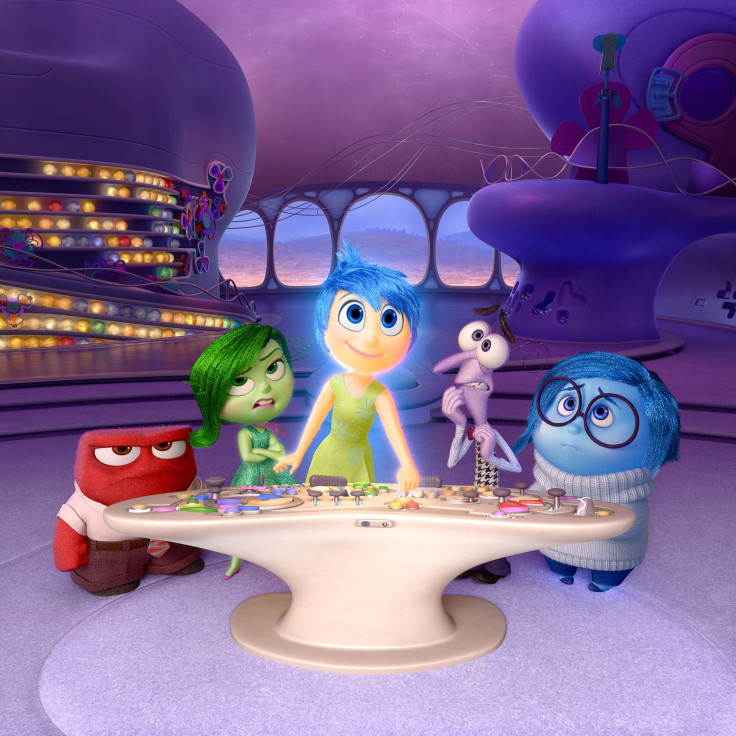‘Inside Out’ Strikes Pixar Movie Gold By Making Emotions The Heroes Of Their New Film [REVIEW]

Disney Pixar’s done it again. The studio behind "Toy Story" continues to immerse viewers into an imaginative world and pack plenty of emotions along for the ride. Only this time, emotions are the characters of this Pixar movie. Our emotions depicted in “Inside Out” are the heroes who have to save the day.
“Inside Out” follows the made-up world inside your head. Handling the controls of your mind are Joy (Amy Poehler), Fear (Bill Hader), Anger (Lewis Black), Disgust (Mindy Kaling) and Sadness (Phyllis Smith). The first four emotions have specific roles to keep their human, pre-teen Riley (Kaitlyn Dias), happy and healthy, but no one really knows what to do with Sadness. When things go awry at headquarters and Joy and Sadness fall outside of the control room, they must get back to return Riley to a balanced state of mind or risk damaging her personality for good. There’s no bad guy in the movie, the conflict is found all inside Riley’s head.
The voice casting for “Inside Out” is impeccable. Poehler’s can-do spunk from “Parks and Recreations” is turned up to 11 and let loose to run the show. Riley is only so compelling because we see the cognitive dissonance at work inside her head. Unlike the central unified boards in her parent’s head, Riley’s emotions are still developing and figuring out how to collaborate harmoniously. It should be noted, that with Joy, Sadness and Riley, this is only the second Pixar movie with a female protagonist after 2012’s “Brave.”
The impressive world of “Inside Out” may lose kids who have yet to learn about the subconscious mind and abstract thought, but the simplistic color-coded world of emotions may be enough for them to hold onto. In this case, “Inside Out” seems much more geared towards adults like “WALL-E” and “Up” were. As grown-ups, we recognize the threat of fading childhood memories and severing connections. It’s an emotional resonance perhaps lost on the kids in the crowd, but will probably hit home for their parents.
Riley’s personalities are connected to her emotional experiences. When that connection is lost, so is that piece of her personality. I couldn’t help but think of the numerous ways people lose interest or are discouraged from pursuing that part of their personality. What would happen to that person during a period of stress or depression and how those parts of their personality may become “disconnected.”
Likewise, the movie addresses how little ones begin to formulate and grow their personalities. “Inside Out” captures the awkward pre-teen stage of life so well: challenging parents, forming crushes and becoming self-conscious of what others think. The movie is deceptively cheery and simple for kids, yet grows in complexity the more one reflects on the made-up structure of this amusement park of a movie.
Even supporting characters like the charming imaginary friend Bing Bong (Richard Kind), or how dreams are created in this whimsical world seem to fit freely within the movie’s frame. The speckled animated stylings around the characters make them fuzzy concepts malleable to the environment, fluid but distinct in their design and how they shape Riley's thoughts.
The more one marvels at “Inside Out,” the more one appreciates Pixar’s craft and creativity in raising the bar at what audiences can expect from an animated film.
“Inside Out” opens in theaters Friday.
© Copyright IBTimes 2025. All rights reserved.






















